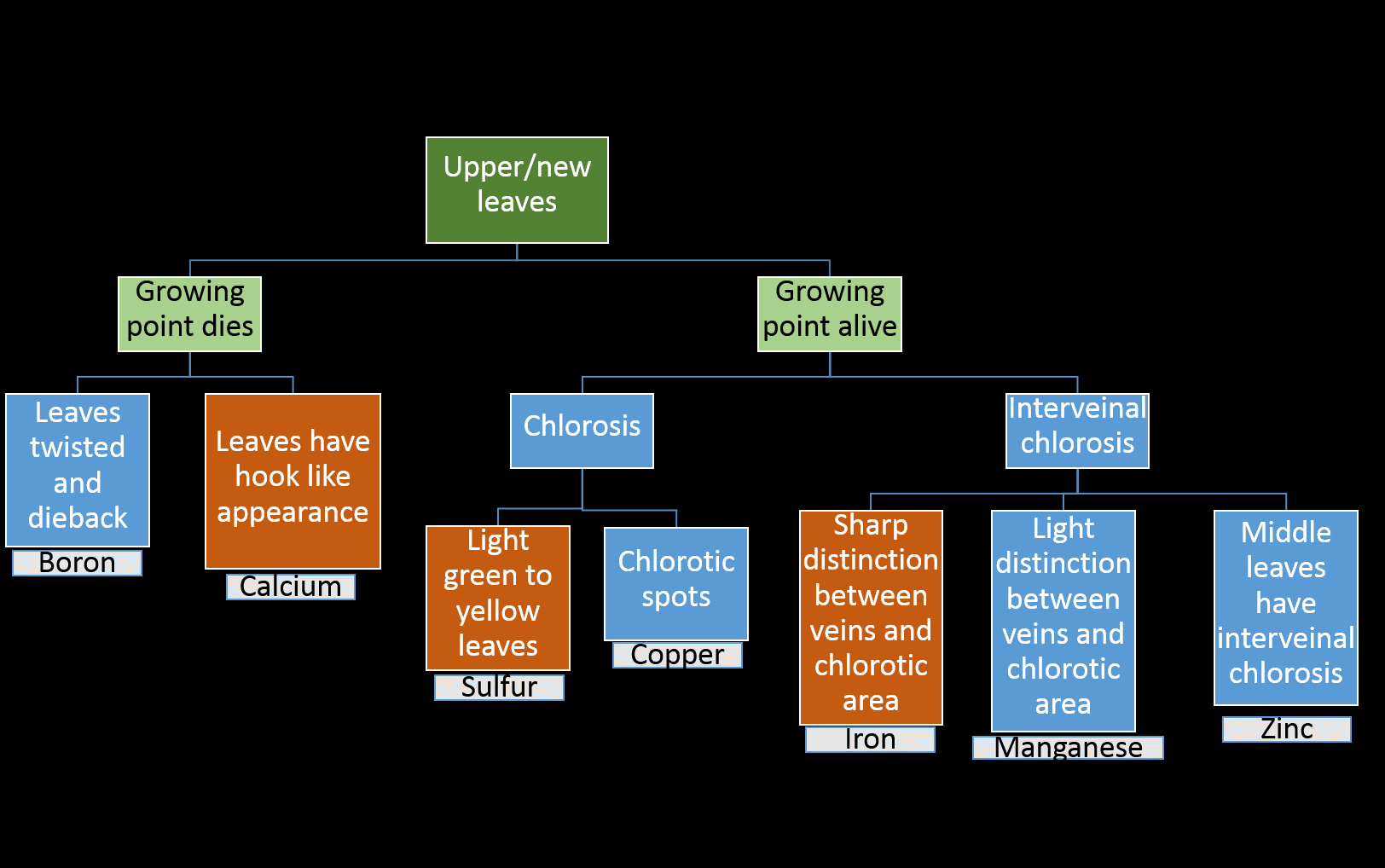As outside light levels are steadily increasing, many of you must have noticed rapid plant growth inside the greenhouses. This is the time to pay close attention to nutrient deficiencies in plants. If supplied nutrients are not proportional to plant growth rate, then deficiency symptoms start to appear on plants.
There are a few important things about nutrients to keep in mind:
- Presence of nutrients in the substrate does not always make them available to plants. Nutrient availability is dependent on pH, which is largely affected by alkalinity of irrigation water, type of fertilizer and substrate composition.
- Electrical conductivity (EC) is a measure of total fertilizer salts. It does not provide information on any individual nutrient. If the fertilizer solution is recycled and old, it is very likely that the EC value is heavily influenced by nutrients that are accumulated and were not actively taken by roots.
I made an identification key below for all nutrients that are required by plants. There are two charts, one is for mobile and other is for immobile nutrients. You should know the meaning of terms like chlorosis (yellowing), necrosis (browning or death), and interveinal (in between veins) chlorosis. These charts are self- explanatory and simple to use. Start with the location (old or new leaves) of the symptoms and go down the respective charts to identify the deficiency. As always, you can reach us at Purdue in case of any doubt.

Fig. 1. Nutrients that are mobile normally show symptoms on lower or older leaves. Of these, phosphorus, nitrogen, magnesium and potassium deficiency are commonly observed in greenhouses

Fig. 2. Nutrients that are immobile normally show symptoms on upper or new leaves. Of these, calcium, sulfur and iron deficiency are commonly observed in greenhouses